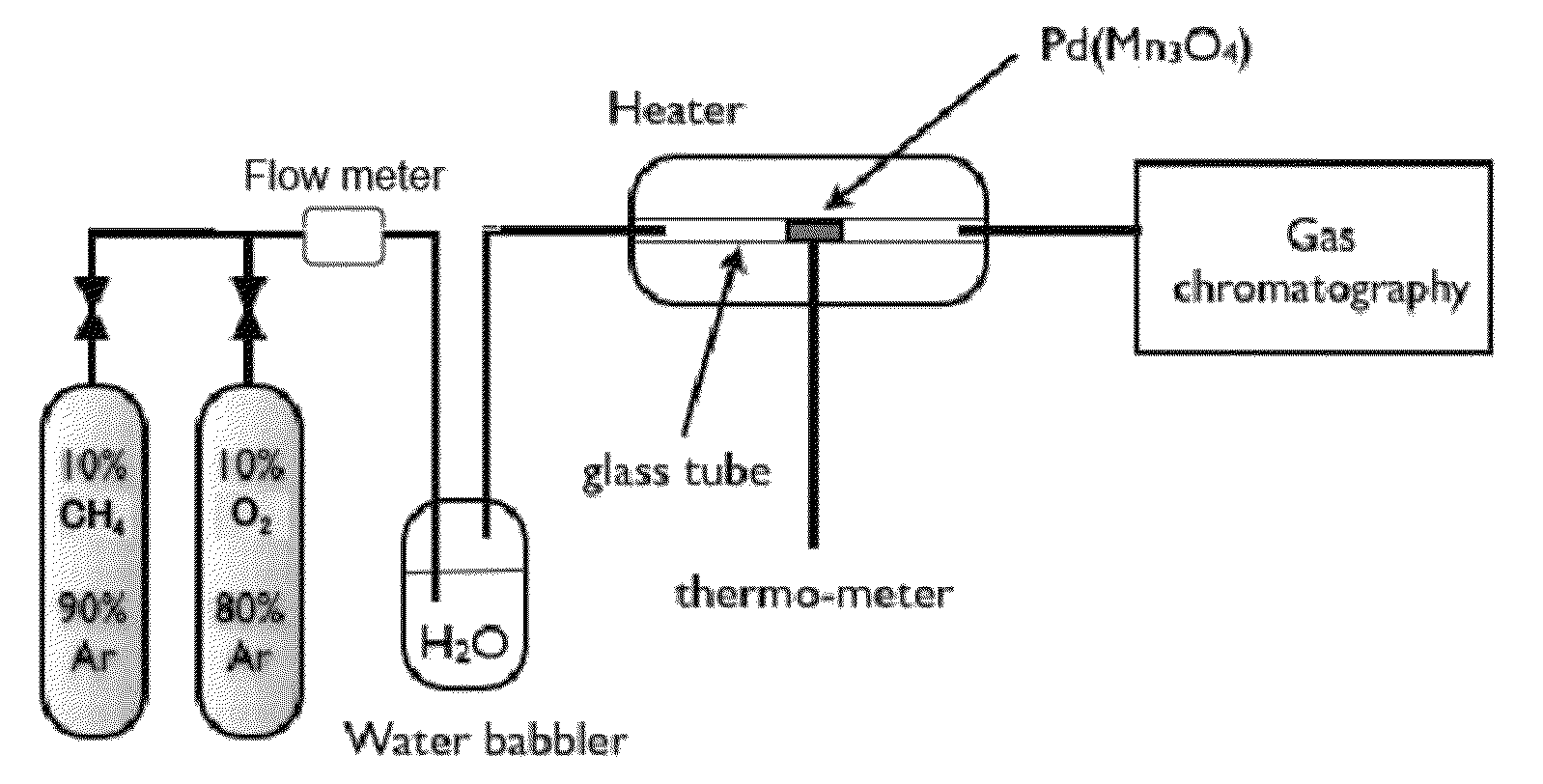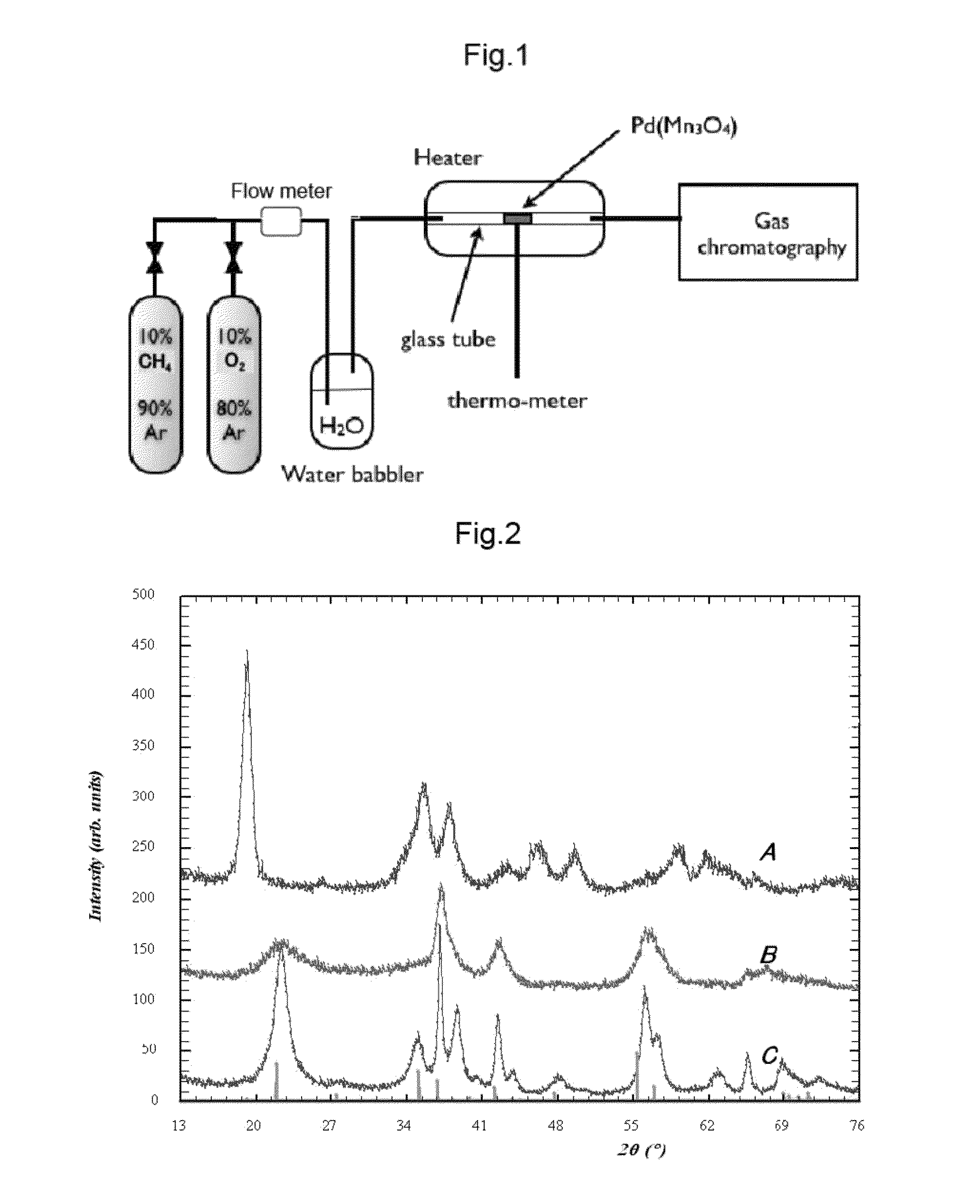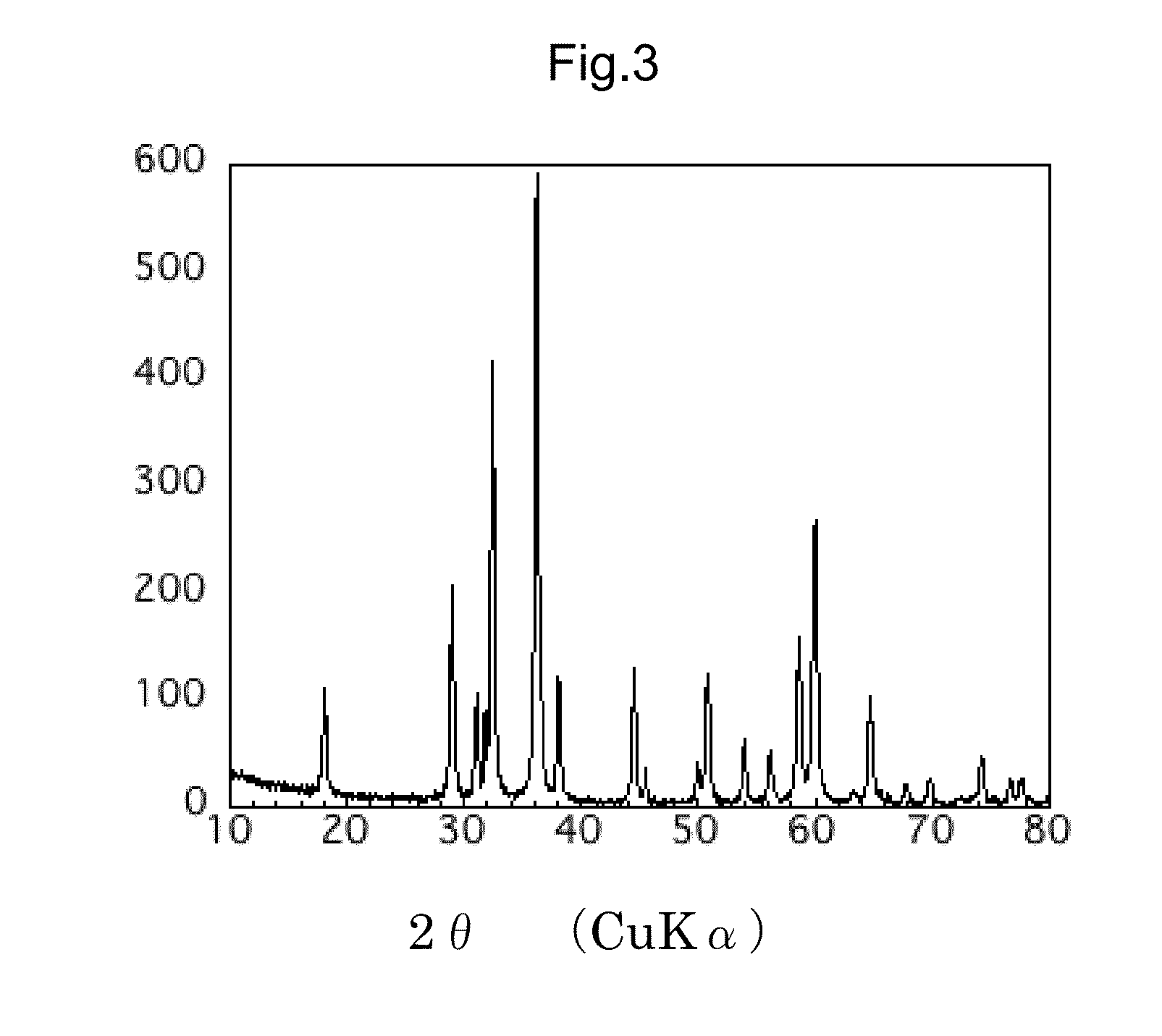Catalysts reforming methane gases into hydrogen and methods for synthesizing the same, and methods for reforming methane gases using said catalysts
a technology of catalysts and methane gases, which is applied in the direction of metal/metal-oxide/metal-hydroxide catalysts, physical/chemical process catalysts, bulk chemical production, etc., can solve the problems of reduced catalytic performance of nickel and iron, substantial cost problems, and the inability to use noble metal catalysts such as platinum and palladium at a low cost. , the effect of reducing the cos
- Summary
- Abstract
- Description
- Claims
- Application Information
AI Technical Summary
Benefits of technology
Problems solved by technology
Method used
Image
Examples
example 1
Methane Gas Reforming Catalyst Pd(Mn3O4) Synthesis Method
(1-1) Method for Synthesizing Ramsdellite-Type Manganese Dioxide MnO2 Having Ramsdellite-Type Crystal Structure Serving as Initial Carrier for Palladium Catalyst Metal Microparticle
(1-1-1) Method for Synthesizing Manganese Oxide Mn3O4 and Ramsdellite-Type Manganese Dioxide MnO2 by Hydrothermal Synthesis Using Manganese Chloride as Starting Material
[0056]Using a manganese chloride as a starting material, the following 3 steps were conducted to synthesize an ramsdellite-type manganese dioxide nanoparticle by a hydrothermal synthesis. 26.7 g of a manganese chloride MnCl2.4H2O (99%, special grade reagent from Wako Pure Chemical Industries, Ltd.) as a starting material was dissolved in 225 ml of an ion exchange water in a beaker.
[0057]In Step 1, this aqueous solution of the manganese chloride (pH4.6) was combined with 90 mL of the ion exchange water in which 10.8 g of a sodium hydroxide NaOH (99%, special grade reagent from Wako Pu...
example 2
Method for Reforming Methane Gas to Hydrogen Using Methane Gas Reforming Catalyst Pd(Mn3O4)
[0072]0.2 g of the catalyst whose main ingredient was Pd(Mn3O4) described in (1-2) shown above (also containing PdMn) was packed into the Pyrex (trade mark) glass tube of 6 mm in inner diameter in the reaction system shown in FIG. 1. The packed catalyst was provided with a glass wool in its both ends to prevent the catalyst powder from being scattered. In this glass tube, the synthesized material was heated by a heater under the condition described below, and while keeping such a temperature the gas mixture of a methane gas (10% concentration) and an argon gas (90% concentration) was humidified by the passage through a bubbler filled with 30 mL of a distilled water at a flow rate of 20 mL / min using a stainless steel piping and then allowed to pass through and contact with the catalyst in this glass tube. The gas after the passage through and the contact with the catalyst in this glass tube was...
PUM
| Property | Measurement | Unit |
|---|---|---|
| particle size | aaaaa | aaaaa |
| temperature | aaaaa | aaaaa |
| temperature | aaaaa | aaaaa |
Abstract
Description
Claims
Application Information
 Login to View More
Login to View More - R&D
- Intellectual Property
- Life Sciences
- Materials
- Tech Scout
- Unparalleled Data Quality
- Higher Quality Content
- 60% Fewer Hallucinations
Browse by: Latest US Patents, China's latest patents, Technical Efficacy Thesaurus, Application Domain, Technology Topic, Popular Technical Reports.
© 2025 PatSnap. All rights reserved.Legal|Privacy policy|Modern Slavery Act Transparency Statement|Sitemap|About US| Contact US: help@patsnap.com



